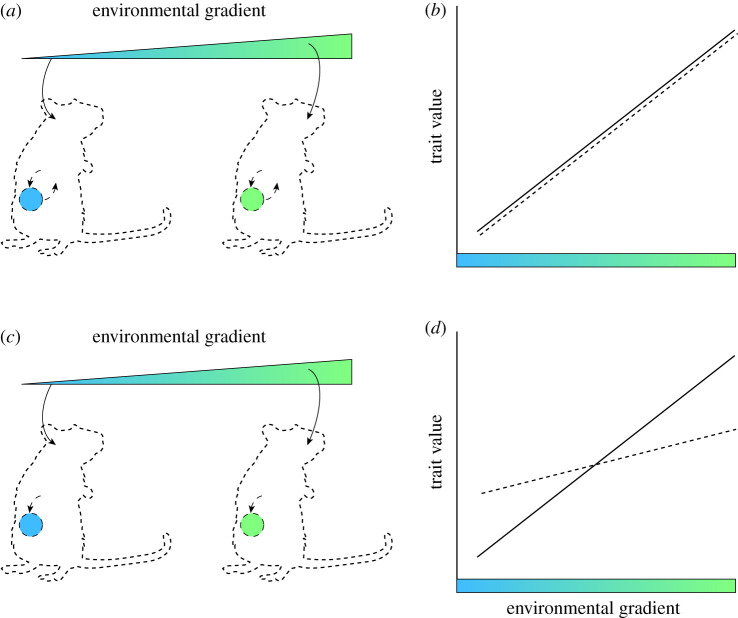Figure 3.
The gut microbiota as an amplifier of environmental signals for adaptive phenotypic plasticity in mammals. (a) An environmental gradient (coloured triangle) affects hosts (mouse cartoons), which in turn affects the gut microbiota (coloured circles). The shifts in the microbiota induced by host responses to the environmental gradient feed back to further affect host responses. (b) The combined direct and microbiota-mediated effects of the environmental gradient in (a) generate a host reaction norm (dashed line) that closely matches the fitness optimal reaction norm (solid line). (c) An environmental gradient (coloured triangle) affects hosts (mouse cartoons) and their microbiota (coloured circles), but the host does not respond to the shifts in the microbiota. (d) Under this scenario, the slope of the host reaction norm (dashed line) is less than the fitness optimal reaction norm (solid line). By serving as a signal amplification mechanism in this way, the microbiota could speed up adaptation during host transition to a new environmental gradient by allowing natural selection to act on host genetic variation in both direct and microbiota-mediated host phenotypic responses to the environmental gradient, rather than on direct host phenotypic responses alone. Alternatively, hosts may come to rely on the microbiota as a signal amplification mechanism through neutral processes, even if the host has previously evolved the optimal reaction norm through direct responses to the environmental gradient alone. Specifically, genetic drift may lead to the replacement of host direct responses to the environmental gradient by host responses to shifts in the microbiota caused by the gradient.

